6 Reasons: Why Choose R Programming for Data Science Projects?
R is a language used for statistical computations, data analysis and graphical representation of data. Created in the 1990s by Ross Ihaka and Robert...
4 min read
Sales : Oct 9, 2017 12:00:00 AM
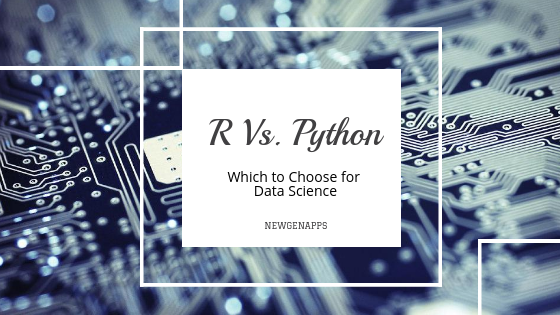
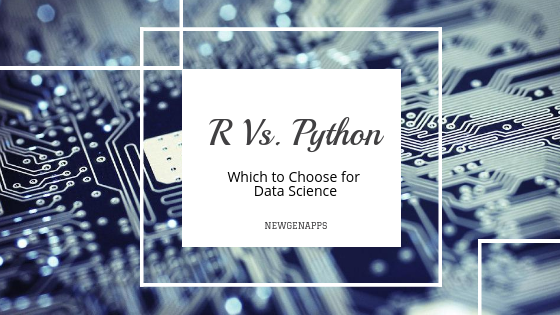
Data science is an evolving field and is rapidly gaining traction. Like with any budding field, there is always some confusion about the learning and implementation process. There are many good options to start learning data science. The range of data science solutions starts from a simple excel sheet to complex tools like SAS. Even the choice of language is quite confusing. Among the many popular options, the choice usually boils down to either R or Python. Even business starting with data science in-house face the same issue. In this guide, we will analyze R and Python in data science and suggest the ideal solution.

R is an open source programming language and software environment for statistical computing and data visualization. The software is backed by the R Foundation for Statistical Computing. The language is extremely popular among scholars, statisticians and data miners. R’s popularity has increased recently due to a surge in big data and data science and it is now likely to uplift further. R is freely available under the GNU General Public License, making it a good choice for both academicians and businesses.
R’s greatest asset is its wide variety of packages for statistical and graphical modeling. Thanks to Hadley Wickham for creating ggplot2, a library for fashioning fine graphs and visualizations. It is also easy to plot mathematical symbols and formulae wherever needed.
Read More: A Complete Overview of R in Data Science
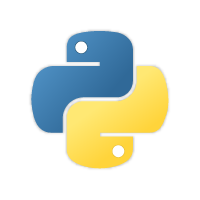
Python is an interpreted, high-level, object-oriented programming language. The focus of Python is always on readability and speed. Its simple, easy to learn syntax emphasizes readability and its extensive library of modules and packages, encourage program modularity and code reuse. Being an open-source language it has a huge community and is widely adopted by businesses.
Python is a very powerful multi-purpose programming language. Over time, the Python community has created many efficient tools for advanced fields like data science, artificial intelligence, machine learning etc. Python also supports data visualizations and plotting based on real data.
Read More: Why Choose Python for Artificial Intelligence Projects?
1. Usability:
R is generally suitable for any type of data analysis. The vast number of packages and readily usable tests make starting any analysis quite easy. R is the go-to language for data analysis tasks requiring standalone computing. It’s great for exploratory work, visualization, complex analysis etc.
Python, on the other hand, is more suitable for implementing algorithms for production use. Being a full-fledged programming language, it provides greater flexibility while integrating data analysis tasks with web apps or if statistical code needs to be incorporated into a production database.
2. Libraries:

Both the languages come with sophisticated data analysis and machine learning packages to can give you a good start. Each has its own analysis, visualization, machine learning and data manipulation packages. The same goes for IDEs.
While working with R the go-to choice for development environment is the RStudio IDE. As for packages you can consider dplyr, plyr and data.table for manipulating packages, stringr for string manipulation, ggvis and ggplot2 for data visualization, and caret for machine learning.
Python comes with numerous development environments and many are good for a start like Spyder, IPython Notebook, and Rodeo. As for popular libraries, Python comes with NumPy /SciPy for scientific computing, matplotlib to make graphs, scikit-learn for machine learning and pandas for data manipulation.
3. Flexibility:
Compared to Python it is easier to do complex analysis in R. In case of R, a huge list of packages is available for implementing and statistical tests and models. While Python does come with libraries for statistical analysis, R is way ahead in the game. Python, on the other hand, comes with better integration options and more streamlined approach to practicing novel tasks. Basically, Python is good if your data analysis project is part of a bigger project that involves many complexities while R is better for approaching data science in depth.
4. Popularity:
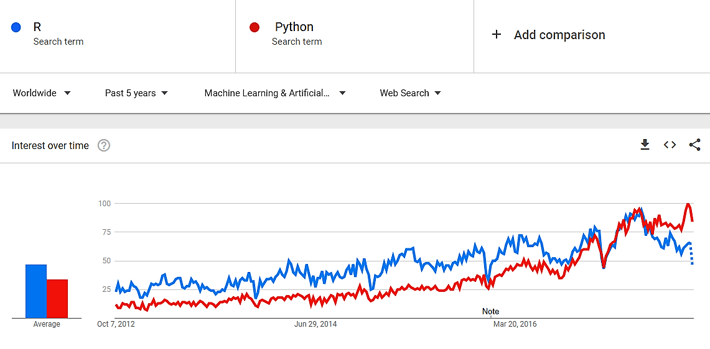
Python is a lot more popular than R. This is primarily due to the wide-scale usability of Python in comparison to R. Python can be used for many different purposes from web development to app development to data science. R, on the other hand, is made for core statistical analysis. Being a niche player it obviously less popular. But when it comes to the landscape of data science R competes net to net with Python. According to Payscale, the average salary of R data scientist is $88,409 while that of Python is $96,616. This is because many corporates prefer Python because of is all-purpose use. That said the difference can be easily covered if the person is highly skilled in the language he chooses.
5. Ease of Learning:
R is the language for academicians and statisticians while Python is an all-purpose language usually preferred by programmers (people from the field of engineering and computer science). R has a very steep learning, it is difficult to start with for non-programmers while Python has a more gradual learning curve. Both languages have good documentations, courses, and books available and their communities are well committed to driving growth to their respective languages.
Read More: Key Skills Required in Every Data Scientist
6. Visualizations:
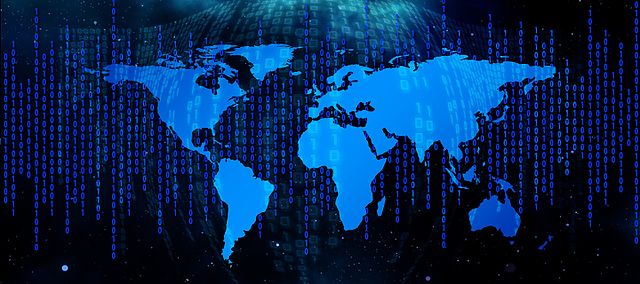
Data scientists frequently plot data to find correlations and patterns. Thus, visualizations become important criteria while choosing a data science tool. Python data visualization libraries include Seaborn, Bokeh, and Pygal, while that of R include ggplot2, ggvis, googleVis, and rCharts. In terms of visuals, R is way ahead of Python. R delivers stunning visuals which are much more sophisticated than the convoluted visualizations of Python.
The choice between R and Python depends completely on the use case and abilities. If you are from a statistical background than it is better to start with R. On the contrary, if you are from computer science than it is better to choose Python. In case of business, the choice should depend on the individual use case and availability. If data scientists of one language are more easily available to you than it is better to go with the favorable option. The choice can also vary based on the level of analysis and development needed. If the need is for hardcore data science than R comes out as a better alternative while Python is the apt solution for application development based on data science.
Looking for data scientists? Contact Us.

R is a language used for statistical computations, data analysis and graphical representation of data. Created in the 1990s by Ross Ihaka and Robert...
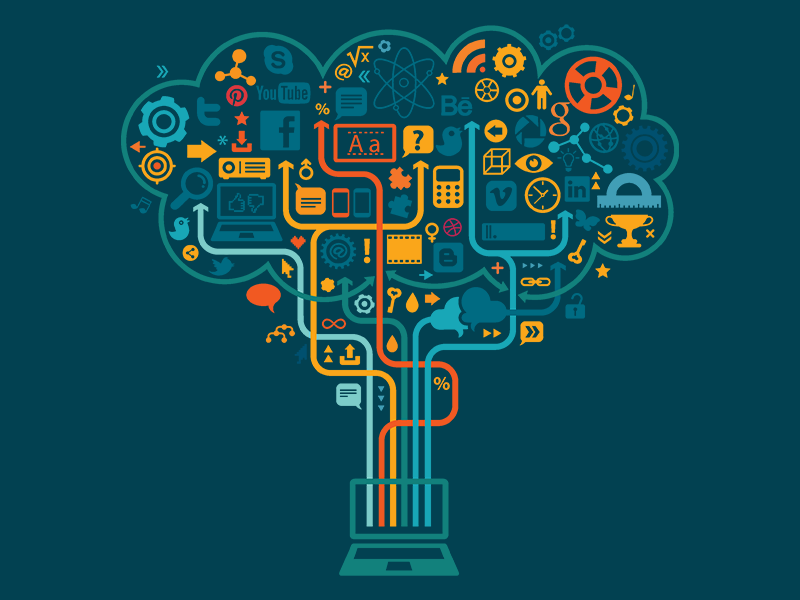
Every professional in the field of big data struggle to choose the right programming language for their project especially when they enter the field....

Over the years, Python has managed to sweep into the coding world and have managed to reach the top. It is one of the multi-paradigm and high-level...